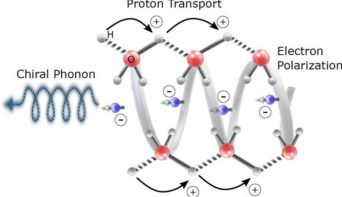Researchers in the US have demonstrated the acoustic analogue of a quantum effect more usually associated with electromagnetic radiation. In the Casimir effect, fluctuations in the electromagnetic field in the quantum vacuum cause two parallel plates to attract each other. Andrés Larraza and Bruce Denardo of the Naval Postgraduate School in California have now observed an acoustic Casimir effect by placing two plates in an acoustic noise field (Phys. Lett . 1998 A248 151).
“The idea of using white noise to mimic zero-point fluctuations is clever, ” said Steve Lamoreaux of Los Alamos National Laboratory in the US. “The fundamentals are quite different from the electrodynamical Casimir effect, but the calculational techniques are quite similar.”
The conventional Casimir effect can be understood in terms of the radiation pressure exerted by electromagnetic plane waves in the quantum vacuum. Reflections of waves within the plates push them apart, while waves outside the plates push them together. The difference between the two is the Casimir force.
The acoustic equivalent to the vacuum electromagnetic field is noise that contains a broad range of wavelengths. But the advantage of the acoustic version is that the speed of sound is much less than the speed of light, which makes the time and length scales more manageable. It could therefore be used to test some of the theories describing the Casimir effect.
Larraza and Denardo produced a uniform acoustic field inside a large steel tank. They then measured the force between two aluminium plates 15 cm in diameter as the separation between them was increased.
When the separation was so small that no waves could exist between the plates, the force was independent of distance. As the separation was increased, the force became repulsive and then attractive. The repulsive force at small separations is not seen in the normal Casimir effect and is thought to be caused by waves travelling in different directions: between the plates the waves travel perpendicular to the plates, while outside the plates the waves travel in all directions.
The force can be altered by changing the distance between the plates, or by changing the frequency content of the acoustic field. This means that the force could be used to levitate an object – although only in a low-gravity environment – or to determine the total intensity of background noise.



